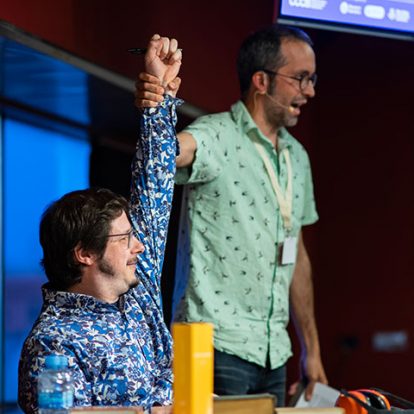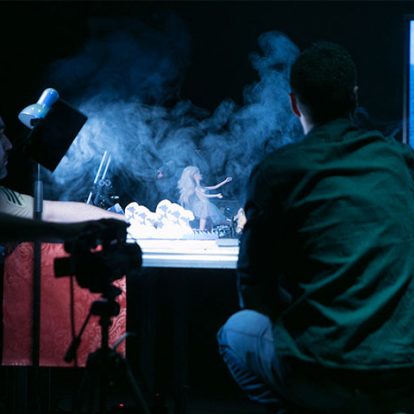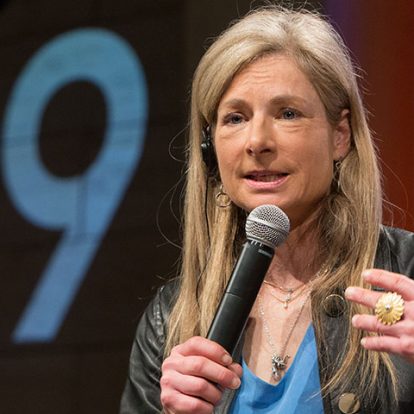Books and Places for a Literary Summer
Kosmopolis
23 July 2019
Eternal cities, the centre of the world, a mysterious lake, the red planet, wonderland or the closest place possible… What book would you pack if you had to choose? This is the question we asked the CCCB team. And these are these are the results – their suggestions for a literary summer. Long live the joy of reading!!!
What book would I take with me to…
Rome
Cambiar de idea (“Change of mind”, Caballo de Troya, 2019) by Aixa de la Cruz, is a heartfelt book that seeks out a comfortable place for unease. And it is from there that the author, at the age of thirty, looks back over her life and relives everything that her body and eyes have experienced, born and automatized, with both irony and self-criticism. A work of autofiction infused with feminism and sexism, in which experiences in cities such as Mexico DF, Granada and Bilbao usher in a new existential phase. I recommend it because it leaves you feeling shaken, something which gives the title meaning. I’d take it with me to Rome because the chaos of the city reflects different phases within the book.
Cristina Fort, Social Media Consultant
Mars
If we bump into each other a few years from now, strolling around one of the settlements on the Red Planet, you’re sure to find me reading Conversazione in Sicilia by Elio Vittorini (Conversations in Sicily, Canongate, 2012). I’ve always considered that trips, especially to inhospitable places, are above all an inner journey. In the Italy of 1940, the novel’s protagonist, Silvestro, leaves Milan to go and find his mother in Sicily. The journey woven by Vittorini is replete with meetings with oneiric characters – “Il mondo è grande ed è bello, ma è molto offeso,” says one of them – and becomes an allegory not only for understanding the return to one’s roots, but also for portraying the Italy of the moment while sidestepping Mussolini’s censorship. In short, it’s a book that bridges the gap between history and dreams, ruin and modernity, moving forward to go back, and Earth and Mars.
Raquel Morcillo, Coordinator of the III Cultural Innovation International Prize
Seoul
On a trip to Seoul, I’d take my most recent purchase from Laie bookshop: Dinero (“Money”, Literatura Random House, 2008), by the writer from Seville Miguel Brieva. It’s a compilation of five publications from the magazine of the same name which feel very contemporary, even though the last one came out in 2005. I think it would be an ideal book to take on a break to a fast-paced destination: short and forceful bites of reading. And why not to Seoul, a city that is driven by progress, where people submit happily to the worship of economic power, and which perfectly reflects the leitmotif of this book: “sell your soul for money”.
Marina Doña, Customer Service
Wonderland
What a difficult task, to draw connections between a place and a book! And what to do with so many books and so many places? In fact, What to Do, by Katchadjian (Dalkey Archive Press, 2016), would be useful because of its arbitrariness. But no, it won’t do until September. Let’s try again: The Language of the Third Reich (Continuum, 2011), by Victor Klemperer, to discuss with Humpty Dumpty? Carl Van Vechten and his cultural history of the cat, so I could understand Cheshire (The Tiger in the House, New York Review Books Classics, 2007)? Perhaps we could celebrate the un-birthday with the help of Let Me not Be Mad, by A.K. Benjamin (Vintage, 2019)? Would this make Wonderland more intelligible? And is that the point? If it is, then: Diez novelas (“Ten novels”, Literatura Random House, 2019) by César Aira, to grasp the fact that literature is a way of making sense of things, and that imagination has an element of hard truth.
Carlos Acevedo, Bookseller at Laie CCCB
Times Square
Fruit of Knowledge by Liv Strömquist (Virago, 2018) is a comic about the vulva and female sexuality. It casts a witty, analytical eye on how western culture, through the fields of religion and science, has tried to control the female body. Each page is full of humour, although that doesn’t stop the author from using arguments backed up by specialist works that are referenced within the text or as foot notes.
I’d take it with me to Times Square and hopefully I’d appear on one of those giant screens, so the book could be seen by as many people as possible. Because that’s precisely the point of this book: to raise the visibility of something which, although it’s right in front of our eyes, has been kept hidden away for hundreds of years.
Susana García, Registration and Conservation Unit
Blanes
I’d take Canto jo i la muntanya balla (“I sing and the mountain dances”, Anagrama, 2019), by Irene Solà. I’d read it while drinking a beer at Els Terrassans or Rafel, or sat on one of the few rocks that are still standing at Punta de Santa Anna, places that are important to me for many reasons. Because Canto jo… is also important to me: I’d take it anywhere, because it’s one of those books that keep you company and that you like to carry with you in your bag when (it seems like) you’ve finished reading it. It’s written with a joy for writing and read with a joy for reading, and it’s made me cry without sadness. Everything in this book is alive. It’s exuberant and simple, like a pop-up. I’d say it has an air of Bolaño and reverberates like the voice of Maria Arnal. But I recommend that you read it because it’s beautiful.
Eva Alonso, CCCB Lab
Samarkand
I’d most certainly take the book The Silk Roads: A New History of the World by Peter Frankopan (Bloomsbury, 2015). This book takes a different approach to history from that which we’re used to. Far from the Eurocentric perspective that dominates work produced in Europe, it offers a much more global and independent view of historical events in the East and West. The perfect place to read it would be in a courtyard of the Shir-Dor Madrassa in the wonderful city of Samarkand. A place of legends, the mere name of which can transport you to an exotic and mysterious East, which inspires dreams of a thousand and one nights and the heady perfumes of spice markets.
Matty Betoret, Customer Service
Las Vegas
The trilogy by Rachel Cusk (Outline, Transit, Kudos, Faber and Faber, 2018 and 2019) and L’ordre du jour (The Oder of the Day, Picador, 2018) by Éric Vuillard are the books that are going in my big suitcase, the one I’m checking in. I think their precision, good sense and originality will be a comfort to me while I’m in Las Vegas.
Herido leve (“Minor injury”, Páginas de Espuma, 2019) by Eloy Tizón is the book that I’ll pop into my hand luggage. I will be my refuge in the city of money, money and more money, as its pages contain (almost) all literature: from Onetti to Becket; from Woolf to Brontë and Mishima. In a city that lives in the moment, I think it’s a good idea to have this book of memories (of reading) and recollections. The author’s recollections, of course, but also my own: why did I give up on that book by Lispector? I still haven’t got on to Sciascia or Dinesen!, etc.
Having said all that, I admit that my preventive measures may be a little extreme, as in the city that hosts The Believer Festival, I’m sure to find somewhere where I don’t feel out of place.
Susana Fernández, Advertising Manager
Lake Geneva
Agota Kristof is best known for her novel The Notebook (Grove Press, 1997). If you haven’t read it, get down to your local library or bookshop right away and pick up a copy. It’s an essential work of universal literature.
But I want to recommend another book by Kristof: The Illiterate (CB Editions, 2014). It’s a short autobiographic story that starts out with the author’s childhood and her relationship with books and literature, and ends up in the Swiss city of Lausanne, on the banks of Lake Geneva, where she went into exile with her newborn daughter during the Second World War. In Switzerland, Kristof had to rebuild her life and learn a new language, namely French. Hence the title of the book, about which I won’t give any more away. If I ever return to Lake Geneva, I’ll take The Illiterate by Agota Kristof. What a contrast between the beauty of the landscape and the rawness of her story. Good literature is full of paradoxes.
Mònica Muñoz, Head of Press and Social Media
Atlantis
My recommendation is Mi vida en Atlántida (“My life in Atlantis”, Maeva, 2004) by Walter Moers, the last book in the trilogy “The 13½ Lives of Captain Bluebear” (The Overlook Press, 2006), set in Zamonia. In an Atlantis that resembles a mythical New York full of rocambolesque creatures, we follow the curious adventures of this “Blue Bear” to the happy end – a conditional happy end, as we’re only told the story of the first half of his lives. And I think you should know: even though this has been labelled as “children’s fiction”, don’t be deceived. Moers is a highly imaginative and critical author whose work is full of references to high culture, and low culture when needed – it also has its fair share of bad jokes – and includes a number of beautiful illustrations by the author himself.
Marta Duran, Intern at CCCB Lab









